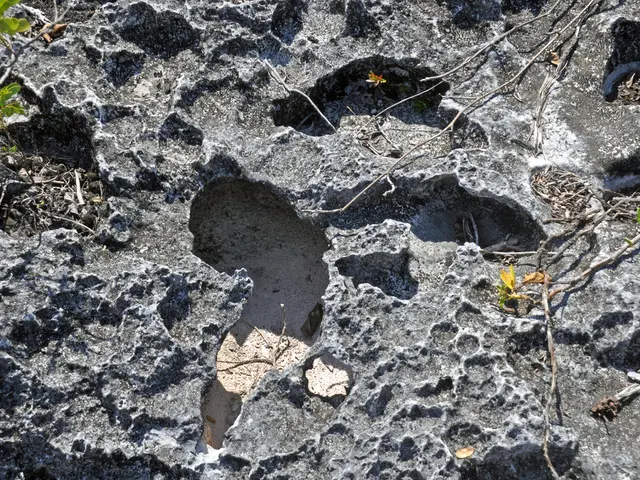Scorching temperatures on the horizon for the Northeast. Learn about the predicted conclusion of this heatwave.
Record-Breaking Heat Wave Continues to Grip the United States
The United States is currently experiencing a prolonged heat wave, with temperatures soaring across multiple regions. The latest Climate Prediction Center forecasts predict that this heat wave will continue through next week, posing significant risks to public health and infrastructure.
The heat wave is being driven by a heat dome, a weather phenomenon intensified by climate change, which is causing extreme heat and humidity in the central United States during summer's hottest month. This heat dome is responsible for the roasting summer heat that started creeping into the Mid-Atlantic and Northeast on Thursday, with high temperatures reaching into the 90s in Burlington, Vermont, and the first heat-related death of the 2025 season being confirmed in Dallas County, Texas.
The worst heat for the East is expected on Friday, with high temperatures in the middle to upper 90s from Washington, DC, to Boston. Nighttime temperatures are taking the hardest hit from climate change, warming faster than daytime highs. As a result, Washington, DC potentially could reach close to 80 degrees by sunrise Saturday, and the heat index will reach or surpass 100 degrees for many major metros, including Washington, DC, Philadelphia, and Baltimore.
Moreover, the heat dome will shrink on Saturday, but sweltering heat will persist through the weekend, mainly in southern parts of the Ohio Valley and Mid-Atlantic on Saturday and in portions of the Southeast on Sunday.
The U.S. has seen a rise in the number of extreme heat waves, with recent events exemplifying these trends. The July 2025 midsummer heat wave was made at least three times more likely due to climate change, affecting nearly half the U.S. population or about 160 million people. This increase in frequency, severity, and duration of heat waves is a direct result of climate change, especially during the summer months.
Heat waves are straining public health and infrastructure, contributing to thousands of deaths annually (over 14,000 heat-related deaths reported from 1979 to 2022) and causing power outages like the blackout affecting 34,000 homes in the Bronx during the recent heat wave. Governments are increasingly recognizing the need to declare heat waves as major disasters to unlock federal disaster funding for mitigation and resilience measures.
In conclusion, climate change has caused U.S. heat waves to become more common, more intense, and longer-lasting during summer months, with widespread impacts on health, environment, and infrastructure. It is crucial for individuals to take precautions during this heat wave, such as staying indoors during the hottest parts of the day and ensuring proper hydration, as even those without vulnerabilities can be affected.
Sources:
- CNN
- National Weather Service
- National Oceanic and Atmospheric Administration
- Amidst the ongoing heat wave, experts in environmental science are increasingly concerned about the long-term health and wellness implications, as recurring events like this could exacerbate existing health disparities and lead to more heat-related illnesses and fatalities.
- As the potential effects of heat waves continue to diversify and escalate, it is paramount for researchers in science, particularly climate-change scientists, to develop innovative therapies and treatments that can mitigate the consequences, such as heat stress, and minimize the damage to our environment.




